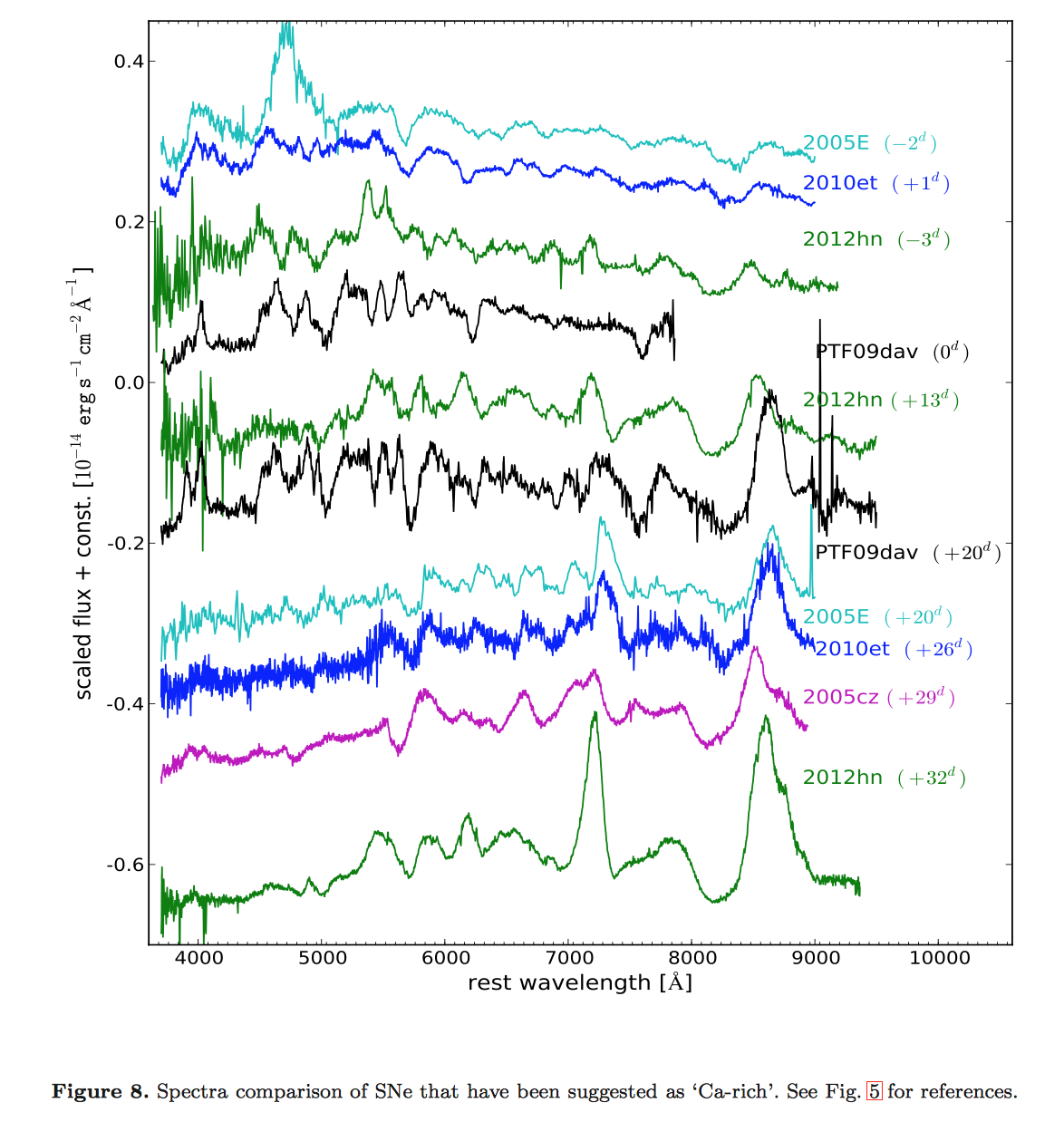Padova-Asiago Supernova Group
Highlights
PESSTO monitoring of SN 2012hn: further heterogeneity among faint Type I supernovae
Valenti, S. et al 2014, MNRAS 437, 1519 (link to pdf)
We present optical and infrared monitoring data of SN 2012hn collected by the Public European Southern Observatory Spectroscopic Survey for Transient Objects. We show that SN 2012hn has a faint peak magnitude (MR ~ -15.65) and shows no hydrogen and no clear evidence for helium in its spectral evolution. Instead, we detect prominent Ca II lines at all epochs, which relates this transient to previously described `Ca-rich' or `gap' transients. However, the photospheric spectra (from -3 to +32 d with respect to peak) of SN 2012hn show a series of absorption lines which are unique and a red continuum that is likely intrinsic rather than due to extinction. Lines of Ti II and Cr II are visible. This may be a temperature effect, which could also explain the red photospheric colour. A nebular spectrum at +150 d shows prominent Ca II, O I, C I and possibly Mg I lines which appear similar in strength to those displayed by core-collapse supernovae (SNe). To add to the puzzle, SN 2012hn is located at a projected distance of 6 kpc from an E/S0 host and is not close to any obvious star-forming region. Overall SN 2012hn resembles a group of faint H-poor SNe that have been discovered recently and for which a convincing and consistent physical explanation is still missing. They all appear to explode preferentially in remote locations offset from a massive host galaxy with deep limits on any dwarf host galaxies, favouring old progenitor systems. SN 2012hn adds heterogeneity to this sample of objects. We discuss potential explosion channels including He-shell detonations and double detonations of white dwarfs as well as peculiar core-collapse SNe. 2
Valenti, S. et al 2014, MNRAS 437, 1519 (link to pdf)
We present optical and infrared monitoring data of SN 2012hn collected by the Public European Southern Observatory Spectroscopic Survey for Transient Objects. We show that SN 2012hn has a faint peak magnitude (MR ~ -15.65) and shows no hydrogen and no clear evidence for helium in its spectral evolution. Instead, we detect prominent Ca II lines at all epochs, which relates this transient to previously described `Ca-rich' or `gap' transients. However, the photospheric spectra (from -3 to +32 d with respect to peak) of SN 2012hn show a series of absorption lines which are unique and a red continuum that is likely intrinsic rather than due to extinction. Lines of Ti II and Cr II are visible. This may be a temperature effect, which could also explain the red photospheric colour. A nebular spectrum at +150 d shows prominent Ca II, O I, C I and possibly Mg I lines which appear similar in strength to those displayed by core-collapse supernovae (SNe). To add to the puzzle, SN 2012hn is located at a projected distance of 6 kpc from an E/S0 host and is not close to any obvious star-forming region. Overall SN 2012hn resembles a group of faint H-poor SNe that have been discovered recently and for which a convincing and consistent physical explanation is still missing. They all appear to explode preferentially in remote locations offset from a massive host galaxy with deep limits on any dwarf host galaxies, favouring old progenitor systems. SN 2012hn adds heterogeneity to this sample of objects. We discuss potential explosion channels including He-shell detonations and double detonations of white dwarfs as well as peculiar core-collapse SNe. 2
